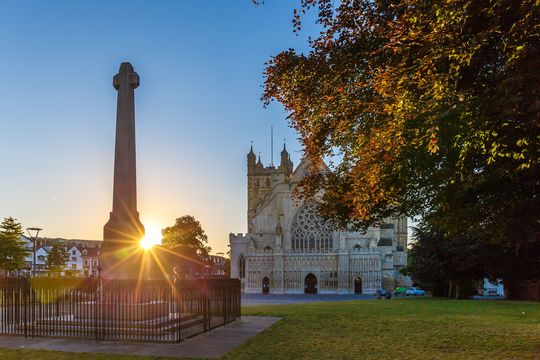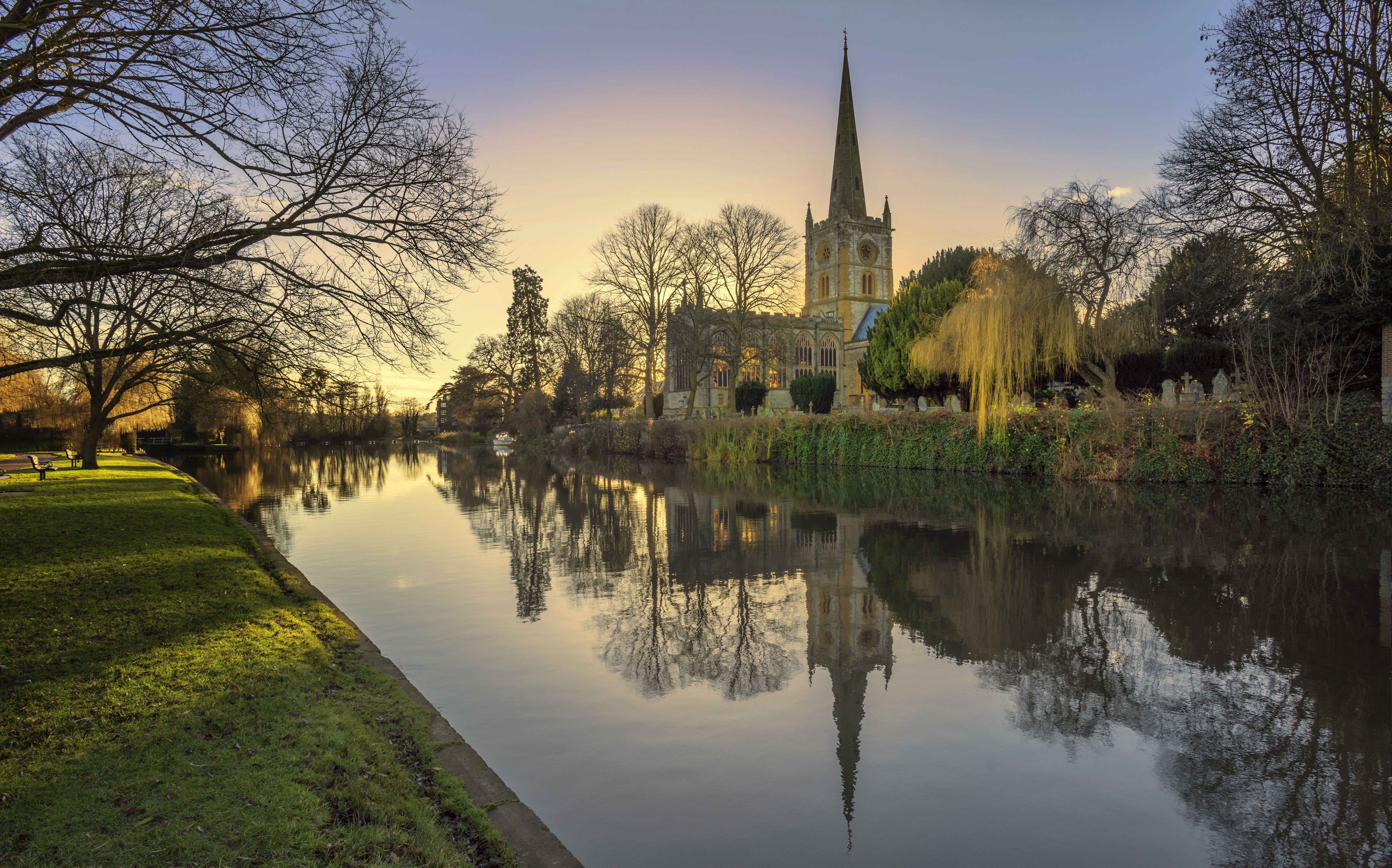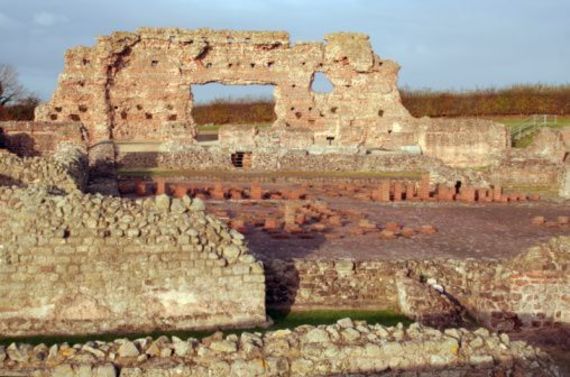
The Fosse Way, Exeter in the southwest and Lincoln to the northeast of Britain.Getty
Embark on a journey through the rich history of Roman Britain using ancient roads that were laid almost 2,000 years ago.
The Romans ruled Britain for almost 400 years and paved more than 3,000 kilometers of roads, connecting formative settlements and impressive fortresses. Most of the original roads have been overlaid and altered over the centuries, but there are still certain routes where it’s possible to retrace ancient footsteps for an authentic Roman journey.
From the famous Ermine Street linking London and York, to Fosse Way, the longest route leading from Exeter to Lincoln, these roads connect towns and cities with a rich Roman heritage – great for those wanting to delve into Britain’s unique and colorful history.
The Fosse Way - Exeter to Lincoln

The Fosse Way.
For a lengthy Roman road trip across Britain take the longest remaining Roman road, the Fosse Way.
Built to connect Exeter to Lincoln, it is possible to drive almost end to end on (what were once) the original Roman roads, passing a selection of spectacular scenery and historic sites along the way.
Exeter
Exeter, a gem of Britain’s southwest, is the Fosse Way’s starting point. Those planning a history-themed road trip can begin by exploring Exeter Cathedral and the city’s medieval underground passes or by following the city wall trail. Parts of the wall are almost 2,000-years-old.
Bath
Next on this route, Bath boasts several historic attractions that no Roman road trip should be without. Brimming with places to explore, eager visitors can dream of tracing historic footsteps through the Roman Baths, one of the best-preserved Roman sites in the world. Another ancient settlement stop-off is the Cotswold town of Cirencester, a spot that makes dreaming of visiting a Roman amphitheater a reality. Delve further into British history at the nearby Rodmarton Manor, a great historic house and garden of the Arts and Crafts movement.
Leicester
Before finishing in the Midlands’ city of Lincoln, this route passes Leicester, a city bursting with centuries of heritage. An itinerary here could include seeing the imposing spire of Leicester Cathedral or the 14th-century timber-beamed Guildhall, once a police station and now a museum. Leicester is also home to the archaeological gem of Grey Friars, a former medieval priory and final resting place of a royal – a story told in great detail at the King Richard III Visitor Centre.

The Fosse Way
Ermine Street - London to York
Ermine Street, connecting London to York, was one of the major Roman routes through England and remains a key route in modern times.
Bishopsgate
Those eager to retrace Roman journeys can add Bishopsgate as the official start of their Roman road trip. Here, parts of the original road can be found in the now very trendy neighborhoods of East London, including Shoreditch and Stoke Newington.
Lincoln
Moving north from the capital, Ermine Street largely follows the modern-day A10 and sections of the A1, a route that passes important Roman towns and cities, including Royston, Godmanchester and Lincoln. Those dreaming of exploring the charms of the cathedral city of Lincoln can add historic sites such as the Newport Arch of Roman North Gate, Lincoln Castle, and the Medieval Bishop’s Palace to their century-spanning itinerary.
York
Continue the ancient route to its finishing line at York, before marveling at York Minster, a site that has been admired since the 7th century, or stepping into the sights, sounds and smells of Viking-age York at the Jorvik Viking Centre.
Watling Street - Dover to Wroxeter
First used by ancient settlers and Britons to travel between the key settlements of Canterbury and St Albans, and later connecting Dover with Wroxeter, in Shropshire, this route travels through modern-day Westminster and can be followed via the A2 and A5 roads.
Read more
Dover
Those dreaming of exploring this ancient thoroughfare from start to finish can look forward to marveling at the coastal town of Dover. Its breath-taking white cliffs have acted as a symbol of arrival in Britain for many centuries, while the imposing 12th-century Dover Castle has helped to shape history since its construction, having fended off invaders in medieval times and having played a pivotal role in both World Wars.

Romain ruins along Watling Street.a
Canterbury
The Roman road then leads to the historic cathedral city and UNESCO World Heritage Site of Canterbury. The city offers a plethora of attractions that span the centuries; from the splendor of Canterbury Cathedral to the ruins of St Augustine’s Abbey and the Roman Museum.
London
Once in London, explorers can seek out a section of the road that still exists, close to Mansion House Underground station, and visit London's Roman Amphitheatre. Visitors can close their eyes and visualize the capital as Londinium, a major commercial hub during the Roman era.
Wroxeter
Formerly the fourth largest city in Roman Britain, Wroxeter traditionally marks the end of this historic route. And never is the Romano-British era easier to imagine than when exploring Wroxeter Roman City, where visitors can walk through the remains of a Roman bathhouse and experience a reconstructed townhouse from 2,000 years ago.
Chester
A spur route of Watling Street continued to the walled city of Chester, where visitors can dream of retracing Roman footsteps under the Eastgate and Eastgate Clock, which stands on the original entrance to what was the Roman fortress of Deva Victrix. Other unmissable historic places to plan into a Roman-themed itinerary include the family-friendly Dewa Roman Experience, Chester Cathedral, and the largest Roman amphitheater in Britain.
H/T: Visit Britain





Comments